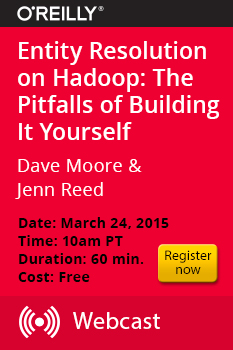"entity resolution" entries

Marshal your data with entity resolution
Analytics can make combining or comparing data faster and less painful.
 Entity resolution refers to processes that businesses and other organizations have to do all the time in order to produce full reports on people, organizations, or events. Entity resolution can be used, for instance, to:
Entity resolution refers to processes that businesses and other organizations have to do all the time in order to produce full reports on people, organizations, or events. Entity resolution can be used, for instance, to:
- Combine your customer data with a list purchased from a data broker. Identical data may be in columns of different names, such as “last” and “surname.” Connecting columns from different databases is a common extract, transform, and load (ETL) task.
- Extract values from one database and match them against one or more columns in another. For instance, if you get a party list, you might want to find your clients among the attendees. A police detective might want to extract the names of people involved in a crime report and see whether any suspects are among them.
- Find a match in dirty data, such as a person whose name is spelled differently in different rows.
Dirty, inconsistent, or unstructured data is the chief challenge in entity resolution. Jenn Reed, director of product management for Novetta Entity Analytics, points out that it’s easy for two numbers to get switched, such as a person’s driver’s license and social security numbers. Over time, sophisticated rules have been created to compare data, and it often requires the comparison of several fields to make sure a match is correct. (For instance, health information exchanges use up to 17 different types of data to make sure the Marcia Marquez who just got admitted to the ER is the same Marcia Marquez who visited her doctor last week.) Read more…